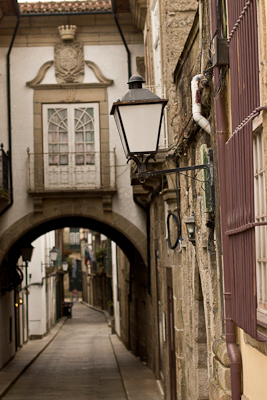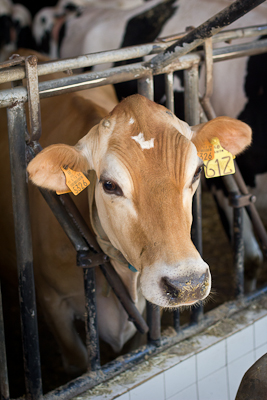
Today kicks off with a melancholic reflection: oh how I wish that my constitution didn’t render breakfast — however delicious — a meal that is (at best) to be tolerated.
Old Parn is not a man of the morning.
So when my glassy eye fell upon a bottle of iced champagne alongside the orange juice, I’m afraid I passed up the opportunity to notch up the day’s first tasting. Sorry.
Instead, I contented myself with some jewel-like pastries and a teabag, desperately, repeatedly and futilely dunked into a jug of warm water. Yeah, sure, it’s a five star hotel. But they still don’t get tea, do they?
Anyhow. My breakfast duly stomached, I strode with oenophiliac purpose towards the cavernous lobby (I say cavernous. Actually, it’s not remotely like a cavern. It has no stalagmites, and there are four glass elevators — enough to give Roald Dahl a wet dream — bombing up and down the side of it. So, when I said ‘cavernous’, what I actually meant was ‘fucking big’. Alright?)
So, friends, I lingered in what I tell myself (mendaciously) was a suave manner, awaiting the rendezvous with my hosts — the Comissao de Viticultura da Regiao dos Vinhos Verdes (just call ’em CVRVV) — and my fellow guests. A bunch of whom, I deduced, were also hangin’ in the cavern.
I circled around for a while like tentative, geriatric (and flightless) vulture. Then a pleasant chap stepped over and greeted me with a burst of a language I should in fact have understood, if GCSEs are anything to go by.
But — well — GCSEs.
So I answered him with an eloquent, sick pause. Then (unnecessarily) I added, ‘I — um — I’m English.’
Ah, sweet England, my guilty yet obscenely well-thumbed get-out-of-jail-free card. Ah. England.
Anyhow, yes, it seems that everyone else on this trip speaks German as their first language.
This puts me in a totally new situation of social awkwardness (and, boy, if you know me, you don’t need me to tell you how high that bar is set). Because I, dear reader, I am the only reason for these guys not to use their native language whenever they talk amongst themselves. I, the Anglo Saxon fly in the sweet Teutonic ointment. This causes me to feel a constant, soul-chewing guilt whenever English is being spoken. Which — given the polite and affable nature of my companions — is frequently.
But no matter. I am used to sensations of soul-chewing guilt. In fact, I’d go so far as to say that I welcome this familiar hue back to my emotional palette. A bit of contrast, y’know?
 A trip to Guimaraes
A trip to Guimaraes
So onto the minibus we scampered.
And pitched up at an old city (‘older than Oxford’, I was told. Oh yes?) called Guimaraes.
There, we were shown around by a jovial chap with ninja English. He told me that the punishment meted out to a man caught consorting with one of Guimaraes’ sizeable population of nuns was no less than five to ten years’ exile. To somewhere like Timor. Or Brazil. Or Angola.
A massive shiver wracked my body as he spoke these deathly words. That explains the fucking saxophonist, I whispered through dry lips.
Then? Then wine.
Vinhos Norte
First, we met the delightful people of Vinhos Norte. They were charming, and dished out some charming wines. Lots of light, fresh, zippy whites (often, the Vinho Verde whites have a dash of fizz to them, and are typically lowish in alcohol, clean, pure). A good few of the whites we tasted would make for damn good aperitif-style drinking. Accessible, balanced.
The full-on sparklers (of which there were a white, a rose and, aye, a red) were, to Old Parn’s gob, a bit less of a success. But others seemed to like ’em well enough.
They then gave us lunch. Oh man, lunch. Lunch meant (amongst other delights) FUCKING HUGE CHUNKS OF MEAT and potatoes that were at least 60% pure, delicious fat.
And we drank red wine from bowls. Rock and sodding roll, my friends. Except, apparently, this is a local custom. Altogether fine by me, I say. But still rock.

I liked the people of Vinhos Norte. Most of their wines aren’t readily available to us in the UK, I suspect (in general, once I’m back home, I’ll be able to find this stuff out, I guess) — but you should definitely cast your beady eye over Tapada dos Monges Loureiro, which is currently up for barter on the Naked Marketplace. I liked this a lot — fresh, lemony zing with a nice bready finish. Lemon meringue pie with a nice (but minimal) buttery pastry crust. And 11.5% ABV. Good stuff.
Quinta da Lixa
Carlos Teixeira, winemaker at Quinta da Lixa, is a measured man, a serious man, a canny man. A man who knows his wine — and his marketing. ‘I’ve nothing to conceal: we do exactly what the market wants us to.’
Fair doos, Carlos. Fair doos.
Carlos showed us his vineyards. Lots of rows of vines with grapes on them, right? You get the picture.

He then served us his wines: seven whites and a couple of pinkies (as they are referred to by serious wine trade professionals).
Quinta da Lixa whites are citrussy. Boy, yes. They burst with grapefruit. A bit like a balloon filled with grapefruit juice that someone just burst. LIKE THAT. They’re fresh, bracing, fruity, accessible. Meanwhile, the roses were both fruit-packed (strawberries, redcurrants and the gang). I get the feeling I’ll be using the above kind of adjectives a fair bit in describing Vinho Verde’s wines. A whopping great bunch of these would definitely be well up lots of people’s streets. Maybe even yours? Except you don’t have a street, do you? You have a goddamn private gravel driveway, I’ll warrant. With an automatic gate. Whatever. Vinho Verde’s whites might well be up your driveway.
I liked Carlos and his colleagues, too.
Quinta de Santa Cruz

Finally, we visited Quinta de Santa Cruz — vineyard and home of another man who makes wine. His name is Mario Machado Marques. And what I will say about him is that his wine is very nice. You won’t be able to buy it, apparently. It’s too popular. So there.
For the duration of this visit, I was — you’ll be delighted to hear — relieved of that onerous burden of linguistic guilt of which I spoke earlier. For Mario spoke exclusively and extensively in German.
Now, you know I said that about GCSEs, right at the beginning? Well. Yes. So, I am rendered dumb whenever it comes to speaking the language. But, y’know, I’m not a total lemon. And I can still understand when someone says (in German), ‘Well, if he’s the only English one, that’s his problem.’
Like I said: Mario’s wines were very nice indeed.
 How does a cheap, mass-produced bottle of mediocre Pinot Grigio become The Best Wine You Drank All Week?
How does a cheap, mass-produced bottle of mediocre Pinot Grigio become The Best Wine You Drank All Week?





















